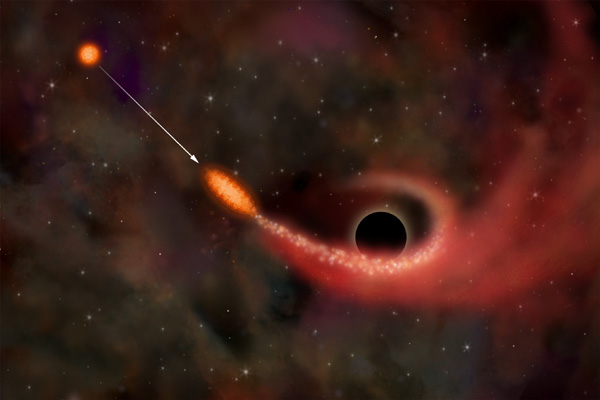A group of researchers at Tel Aviv University found the period when most of the growth of the largest black holes in the universe took place. This era of rapid growth occurred when the universe was about 1.2 billion years old

A group of researchers at Tel Aviv University found the period when most of the growth of the largest black holes in the universe took place. This era of rapid growth occurred when the universe was about 1.2 billion years old. The research links this period with the creation of the first black holes, in the young universe, probably as a result of the explosion of the first stars, and also to later times, when those black holes stopped growing
Researchers from Tel Aviv University report in a new article that they have found the period in the history of the universe, approximately 1.2 billion years after the Big Bang, in which the most significant increase in the mass of the largest black holes occurred. The researchers: Benny Trachtenbrot, and his supervisor, Professor Hagai Netzer, from the School of Physics and Astronomy used a method developed at Tel Aviv University, several years ago, which makes it possible to measure the mass of active black holes even at the enormous distances involved. The group's previous observations, reported in several papers in 2004 and 2007, showed that the largest black holes reached their peak size when the universe was between two and three billion years old. In addition to this, it was found in the previous studies that those giant black holes are at the end of their growth period and the whole process started in a much earlier period.
The new study deals with younger and more distant black guys and its goal was to accurately identify that early period. The study was accepted for publication in the scientific monthly The Astrophysical Journal.
Background: Most of the galaxies in the universe, including the Milky Way galaxy, contain giant black holes at their center. The mass of these black holes is at least a million times, and sometimes ten billion times, greater than the mass of the Sun. The way to discover these black holes is to identify galaxies that show a particularly high intensity of radiation in their center. This radiation is the result of the fall of a large amount of matter into the black hole in the center, a process that is many times more efficient than the energy creation processes in the stars. Black holes that absorb matter are called "active black holes". The fall of matter into the black hole is the main cause of the increase in its mass, a process that takes a long time, sometimes even billions of years.
The research, the results of which are now being published, took several years and involved complex observations of extremely pale and distant bodies. It involved the use of two giant ground-based telescopes, one in Hawaii (the Gemini International Telescope on the summit of Mount Mauna Kea) and the other in Chile (the European VLT telescope on the summit of Mount Fresnel). Observations were made on about 40 black holes, all at a time when the age of the universe was about 1.2 billion years. The measurements show that the mass of those black holes is approximately ten times smaller than the mass of the largest black holes, which were discovered in the previous stages of the research, but that their growth rate is much faster. The measurements of the mass and the rate of absorption of matter into the black hole make it possible to reconstruct its history, starting from very ancient times. The researchers speculate that the process began when the universe was several hundred million years old. The size of the black holes then, when they formed, was about 100 to 1000 times the mass of our Sun. It is therefore reasonable to assume that most of them were created as a result of the death of the first stars in the universe,
that exploded and left behind the same black holes. It was also found that after the rapid growth during the first 1.2 billion years of their development, the rate slowed down
The growth in a significant way - the continuation of the process, whether continuously or for several short periods, did not last more than about 100 to 200 million more years (a very short period in astronomical terms), before it stopped completely.
The new research is the culmination of a major project at Tel Aviv University that lasted about seven years. He is also joined by Professor Ohad Shemer, from the University of North Texas, who was previously a research student at Tel Aviv University, and Professor Paulina Lira, from the University of Chile in Santiago.

One response
The differences between an asteroid and a meteorite